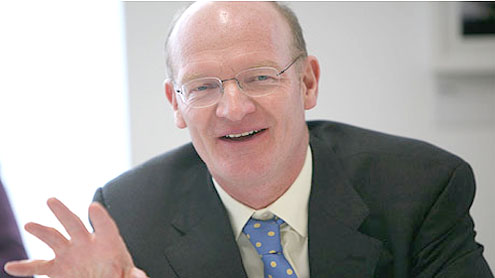 LONDON: The bones of people who died up to a hundred years ago are being used in the development of new treatments for chronic back pain, researchers at the UK’s University of Leeds announced on Monday. It is the first time old bones have been used in this way, researchers said.The research is bringing together the unusual combination of latest computer modelling techniques developed at the University of Leeds, and archaeology and anthropology expertise at the University of Bristol.With the British Engineering and Physical Sciences Research Council (EPSRC) funding, spines from up to 40 skeletons housed in museums and university anatomy collections are being analysed in the research.The data generated, on different spine conditions and on how spines vary in size and shape, is playing a key role in the development of innovative computer models. This will enable the potential impact of new treatments and implant materials (such as keyhole spinal surgery and artificial disc replacements) to be evaluated before they are used on patients.Ultimately, it will also be possible to use the models to pinpoint the type of treatment best suited to an individual patient.The UK Minister for Universities and Science David Willetts speaking about the new research said: “Back pain is an extremely common condition, but everyone has a slightly different spine so developing new treatments can be a real challenge. This investment could significantly improve quality of life for millions of people around the world, so it’s fantastic that the research is being carried out in the UK. It’s also truly fascinating that old bones and very new technology can come together to deliver benefits for patients.”This is the first software of its kind designed for the treatment of back conditions. The research will also speed up the process of clinical trials for new treatments, which currently can take up to ten years.
LONDON: The bones of people who died up to a hundred years ago are being used in the development of new treatments for chronic back pain, researchers at the UK’s University of Leeds announced on Monday. It is the first time old bones have been used in this way, researchers said.The research is bringing together the unusual combination of latest computer modelling techniques developed at the University of Leeds, and archaeology and anthropology expertise at the University of Bristol.With the British Engineering and Physical Sciences Research Council (EPSRC) funding, spines from up to 40 skeletons housed in museums and university anatomy collections are being analysed in the research.The data generated, on different spine conditions and on how spines vary in size and shape, is playing a key role in the development of innovative computer models. This will enable the potential impact of new treatments and implant materials (such as keyhole spinal surgery and artificial disc replacements) to be evaluated before they are used on patients.Ultimately, it will also be possible to use the models to pinpoint the type of treatment best suited to an individual patient.The UK Minister for Universities and Science David Willetts speaking about the new research said: “Back pain is an extremely common condition, but everyone has a slightly different spine so developing new treatments can be a real challenge. This investment could significantly improve quality of life for millions of people around the world, so it’s fantastic that the research is being carried out in the UK. It’s also truly fascinating that old bones and very new technology can come together to deliver benefits for patients.”This is the first software of its kind designed for the treatment of back conditions. The research will also speed up the process of clinical trials for new treatments, which currently can take up to ten years.
The data provided by the old bones will be used to supplement similar data collected from bodies donated to science, which are limited in number and mainly come from older age groups.This computer modelling breakthrough is possible thanks to recent advances in micro-CT (computed tomography) scanning, and to new techniques developed at the University of Leeds enabling data from micro-CT scans to be transformed into sophisticated computer models.Computed tomography (CT) scans use X-rays to build up 3-dimensional images from multiple cross-sectional pictures of body organs or tissues.The 5-year project “Engineering Solutions to Back Pain: An Interdisciplinary Approach” began last year and is due to run until 2013. It will receive EPSRC funding of nearly 1.1 million pounds. EPSRC is the UK’s main agency for funding research in engineering and the physical sciences.According to the researchers, more effective treatment of back pain would have enormous benefits. Apart from a considerable improvement in the quality of life enjoyed by people suffering from the condition, it would also help the economy by reducing time taken off work. Moreover, it could cut the burden on healthcare resources caused by repeated, ongoing visits to doctors and hospital consultants – APP












